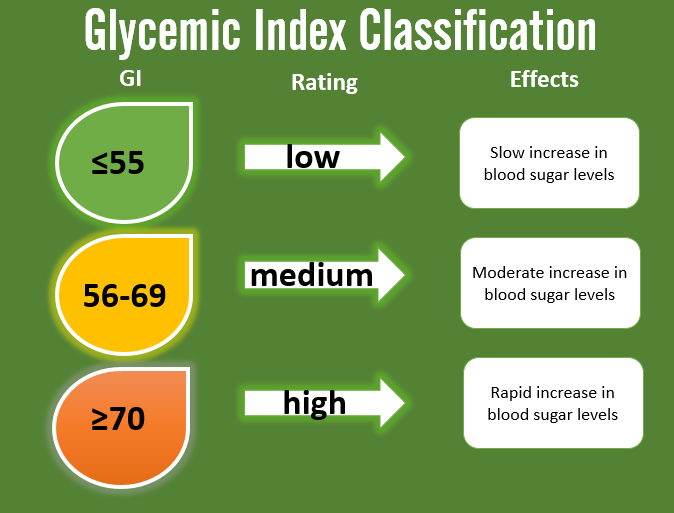We do our best to watch what we eat, make good food choices, and keep up with the latest trends in nutrition. Even then, it’s hard to make sure you stay healthy while watching your weight. The “truth” behind watching what you eat seems to be one big secret.
In reality, there is a not-so-secret way you can watch your health and see benefits when it comes to balancing your weight as well. Nutritionists and dieticians have known for decades about a little thing called blood sugar.

First of all, what is blood sugar?
Blood sugar is also known as blood glucose. It refers to the sugar, in the form of glucose, that travels in the blood to deliver energy to cells all over our body.
Most foods have energy that is then transformed through a series of chemical processes into glucose. Every food that provides energy causes the blood sugar to rise to different levels.
How do you know how much a food causes your blood sugar to rise? Decades ago, scientists developed something called the Glycemic Index (GI). They measured how much your blood sugar rises after eating certain foods, and compared it to what happens to your blood sugar level when you consume pure glucose.
This was then translated to a number from 0 to 100, which then categorizes foods into either having a low, medium or high GI:
Why should I care about blood sugar?
If you have heard about blood sugar, you are probably thinking that it is only a problem for people with diabetes.
While it is true that people with diabetes type I and II need to control their blood sugar levels on a regular basis, it is important for everyone to be aware of their blood sugar health.
Why?
Poor diet and rapid fluctuations in blood sugar over time can damage the pancreas’ ability to produce insulin. Insulin is the hormone responsible for getting the glucose (energy) into the cell.
So if you don’t have insulin, the sugar remains in your blood, causing damage to the rest of your organs.
When physicians and dieticians detect irregular high blood sugar, you could be diagnosed with pre-diabetes or metabolic syndrome: two illnesses that have abnormal high blood sugar as a symptom. If this goes unchecked and habits don’t change, you could eventually be diagnosed with diabetes.
What does this all mean?
In the worst case scenario, if you don’t watch your blood sugar and regulate your intake of foods you eat regularly that could cause rapid spikes, you could be at risk for a range of illnesses.In a less dramatic scenario, eating foods regularly with a high GI could result in weight gain, irritability, nausea, drowsiness, and, yes, even hunger.
What foods should I watch out for?
You can probably guess most of the big ones. Starchy foods like white bread, pasta, and rice, as well as sweets like candies, pastries and cookies are all in the high GI category.
However, there are a few foods that you probably wouldn’t think would have a high GI. In fact, you may consider a lot of these foods “health foods” and integrate them into your diet as often as you can.
What are these foods?
1. Bran Cereals and Instant Oatmeal
Because bran cereals and instant oatmeal are high in fiber, we tend to think of them as health foods. And while they do, in fact, have health benefits over sugary and refined wheat cereals, many of them raise your blood sugar almost as much as, if not more than, sugary cereal.
Coco Pops have a GI of 77, while instant oatmeal has a GI of 79.
Corn flakes have a GI of 81, and Grape-Nuts has almost just as much with a GI of 75.
2. Watermelon
Watermelon is very low in calories. Because of this, it is often recommended as a midday snack or light desert. However, watermelon has a GI of 72. This is even more than white bread, which has a GI of 69!
3. Raisins
Raisins are a common add-on to trail mixes or are often considered a take-away snack in their convenient boxes. However, raisins have a GI of 64, which is right up there with ice cream.
4. Sweet potatoes
Sweet potatoes are high in a range of vitamins and minerals, which make them a good switch out for while potatoes. However, this doesn’t cancel out the fact that they are still quite starchy, and as a result, have a high glycemic load, with a GI of 70.
—
Of course, seeing this list of foods shouldn’t make you think you need to banish them from your grocery list forever. Most of these foods do have a range of benefits, especially in terms of “lighter” alternatives to their traditional counterparts.
However, it is important to consider limiting yourself from eating these foods daily, especially if you think you might be at risk of pre-diabetes, metabolic syndrome or diabetes. Talk to your doctor or dietician if you think you might have any of these illnesses.
Do you know of other foods that have an unexpectedly high GI? Let us know in the comments below!